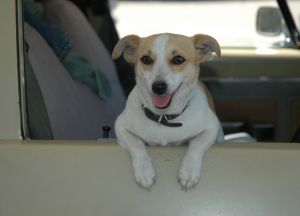 One question that’s asked around this time of year is whether reindeer are real. Sure, kids worldwide ask about Santa, but even some adults, who have long since retired their Santa beliefs, wonder whether reindeer are real, or not. Out of all the cast of characters in the holiday lore (Santa, elves … the Grinch), it seems that reindeer are the most likely to actually exist (aside from that whole flying thing). So, do reindeer actually exist? And if so, why’d they get the job of pulling an obese man and several tons of gifts across the globe?
One question that’s asked around this time of year is whether reindeer are real. Sure, kids worldwide ask about Santa, but even some adults, who have long since retired their Santa beliefs, wonder whether reindeer are real, or not. Out of all the cast of characters in the holiday lore (Santa, elves … the Grinch), it seems that reindeer are the most likely to actually exist (aside from that whole flying thing). So, do reindeer actually exist? And if so, why’d they get the job of pulling an obese man and several tons of gifts across the globe?
The real reindeer
Alas, dear friends, reindeer are 100% real. In fact, they’re easily found in places such as Greenland, Siberia, Finland, Alaska and Canada. They’re even in northern portions of the continental United States, such as Maine, although they go by a different name there – Caribou (in fact, there’s a whole town in Maine named after Caribou).
While the lore of Christmas might make you giddy to see a real reindeer, the truth is they’re not hard to find and aren’t anywhere near endangered. They are hunted for meat and hides. They’re domesticated for milk and, yes, pulling things – even sleighs during the harsh Arctic and Subarctic winters. They are as normal an animal as you can get, meaning, sadly, they don’t fly.
But since they don’t fly, how did they get lumped into the Santa lore?
Reindeer and Santa
In terms of stories, Santa is much older than his trusted reindeer. Ever since the 4th century, a kind old man was known to drop off presents during the holidays. But it wasn’t until the 1800s that reindeer joined the party. Previously, South Americans believed Santa rode a donkey, while Europeans thought he owned a white horse. Reindeer made their first appearance, it’s believed, in the poem “A Visit from St. Nicholas” (which we know as “The Night Before Christmas”), written by Clement C. Moore. The popularity of the poem helped the reindeer become a part of (for lack of a better term) pop culture, and soon enough they were seen in paintings.
The fact that Santa comes from the north, and needs to pull a large load of presents, likely inspired Moore to use reindeer as transportation, as reindeer have been pulling sleighs for centuries. A sleigh just happens to be one of the most effective modes of travel on snow and ice, which is the type of environment reindeer live in.
And Rudolph?
Rudolph is no different from the Geico gecko, I hate to admit. He was created for marketing purposes. In 1939, Robert May, who worked for the department store Montgomery Ward, created a rhyming book as a free giveaway promotional gift for children. The book, Rudolph the Red Nosed Reindeer, was a huge hit, and sold more than 6 million copies within ten years. In 1947, Gene Autry recorded the book as a song, and as a result, Rudolph has gone down in history.
Of course, there is no red-nosed reindeer … or is there?
Funny you should ask, because science suggests that Rudolph (or someone like him) does exist. Reindeer have 25% more blood vessels in their nasal region than humans, meaning more blood flows there. At higher elevations, their blood flow increases in order to keep warm and, as a result, their noses can turn a shade of red. Now, while “higher elevations” means a few thousand feet above sea level, just imagine what would happen to their noses if they were as high as, well, the sky? Would the result be something that looks like Rudolph? Perhaps, which is why, although we’re yet to see a flying reindeer, you can never rule anything out, can you?





